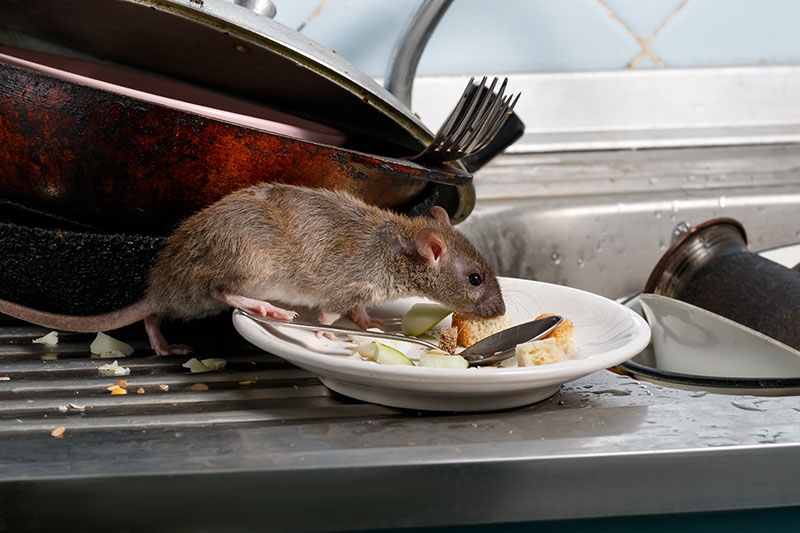Motivation
Rat migration into domestic properties increased during the COVID lockdown. They were entering properties before, but we had significantly more commercial bookings, and now the company is 80% focused on domestic cases. Rats, like us, are motivated by a desire to reproduce and survive. They are highly intelligent, and some of the decision-making we capture on our cameras is remarkable.
Pestprooflondon is a rodent-only humane company that exclusively deals with rodents. The model we follow is Danish, representing a comprehensive approach to a complex issue.
The two primary entry points for rats in domestic settings are the kitchen and lofts, both typically starting from the same place: the drains. Rats will identify weaknesses in clay brickwork or plastic and enlarge even the smallest hole. They then reach the soil and start digging. They dig down, similar to nesting and burrowing behavior, and then decide whether they are feeding or nesting.

Nesting in Lofts
Pregnant female rats are aware that rat pups can be dispatched fairly quickly within nests. So, when rats are starving, they may resort to cannibalism. We have observed rats stuck on sticky boards, which are inhumane products, being eaten alive by other rats. Pregnant females seek safety for their newborns and typically use a cavity that allows them to scale downpipes and enter through the fascia or a party wall.
They do not enter the loft to feed. We often receive reports of a lot of noise, and sometimes people mistake baby rats for mice.
The female rat will visit the drain daily to feed but primarily to rehydrate. A tracking scent is created along the route. When the pups are born, the mother will eventually lead them to the drains. If left unchecked, the mother may continue to reside in the loft along with the juvenile rats. Rats do not have a specific breeding season; however, very hot or cold temperatures can reduce breeding. Females of breeding age come into heat all year round, every 4 to 5 days, unless they are pregnant or nursing. The gestation period is typically 22 days but can vary from 21 to 25. We often receive reports of noise within the walls, particularly during the daytime, which is usually the pups.
Problems with Lofts
Proofing a loft is challenging and can be expensive and time-consuming. We need to completely clear the loft infrequently but hope that, after surveying, we can stop the rats at the drain before they enter the building structure. If rats are using rainwater or the fascia, we have products to prevent external access. However, addressing party wall transfer is difficult, and we need to examine the neighbor’s drains to determine if external and drainage proofing would benefit them.
Feeding in Kitchens
Rats are nocturnal and use drains, burrows, subfloors, or party walls to gain entry through existing holes, such as cables, plumbing pipework, or waste. They can also hide in the backs of fridges and around ovens. People often report a smell that leads them to rodents, rather than noise. Rats become bolder when the area is vacant. At night, they may roam through houses, even feeding from toasters without people noticing. This is dangerous, as they originate from drains and can pose health risks.

When rats are underneath a house, they are motivated by smell. Properties undergo air changes, with both negative and positive pressures. For example, if you are cooking with spices and open the front door, positive air pressure will push through cavities, making subfloor areas near small holes desirable. When we proof, we seal every minor hole with fast-curing silicone or fast-curing cement with glass fiber. The key products required are a qualified proofer and mesh, followed by sealing.
We proof the area currently in use and improve everything we can to offer a one-year guarantee on our work. Poisons, sticky boards, expanding foam, and the three-visit package are not sustainable solutions. The only effective approach is to use a confident and qualified company that backs its model with a strong guarantee. Delaying rat control within your property allows them to become more confident and create more entry points, making the problem more difficult to address. Rats cause damage and can spread sickness. The list below details diseases that rats can potentially transport to your living area.
Contact Pestprooflondon to address this problem before it worsens.
List of diseases that rats carry
- Weil’s disease – a form of leptospirosis resulting in headaches, muscle pain, and in severe cases, meningitis and kidney failure.
- Salmonella – a bacterium causing upset stomachs, diarrhea, fever, and pain.
- Tuberculosis – a disease that attacks the lungs.
- Foot and mouth disease – affecting humans, cattle, and sheep.
- E. coli – an intestinal bacteria causing symptoms such as fatigue, nausea, stomach cramps, and diarrhea.
- Cryptosporidiosis – an intestinal disease caused by a parasite.
- Hantavirus – causing a severe flu-like illness.
- Listeria – leading to high temperatures, aches, pains, vomiting, and diarrhea.
- Toxoplasma gondii – which can cause glandular fever-like illness or flu-like symptoms.
